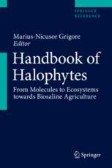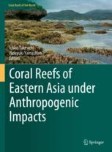Search
Search Results
-
Changes in Antioxidant Metabolism and Plant Growth of Wild Rocket Diplotaxis tenuifolia (L.) DC cv Dallas Leaves as Affected by Different Nutrient Supply Levels and Growing Systems
It has been widely assessed that the quality and quantity of nutrient supply and the growing system can strongly affect the growth and development of...

-
Species-Dependent Impacts on the Nutritional Profile of Tomato (Solanum lycopersicum L.) and Rocket (Eruca sativa L.) Plants Following to Foliar Application of Yeast Suspensions
The foliar application of yeast ( Saccharomyces cerevisiae ) suspensions is a widely used small-scale horticultural practice against stress impacts and...
-
Green manures of Indian mustard and wild rocket enhance cucumber resistance to Fusarium wilt through modulating rhizosphere bacterial community composition
Background and aimsGreen manuring can suppress crop diseases and change soil microbial communities, but the functional significances of changes in...

-
Neglected and Underutilized Spices of India
The number of plants that humans use as spices and flavoring herbs may number around 300 (272) are described in detail in the Encyclopedia of Herbs...
-
Halophytes as Food
The halophytes are a specialized group of plants among which there are some representatives that have been cultivated for millenia. Domesticated or...
-
Effect of the timing of pupal irradiation on the quality and sterility of oriental fruit flies (Diptera: Tephritidae) for use in Sterile Insect Technique
The Sterile Insect Technique (SIT) is a target-specific, biologically based method used to control pestiferous tephritids entailing the release of...
-
Species-Rich Arable Land
Before the introduction of mineral fertilizers and the widespread use of synthetic pesticides, arable land of Central Europe was home to a large...
-
Genetic Resources of Brassicas
The Family Brassicaceae has a significant diversity of plant species as it includes more than 3700 species and 338 genera distributed globally....
-
Paradise Lot: A Temperate-Climate Urban Agroforestry Biodiversity Island
Paradise Lot is a garden and home site occupying 400 square meters in the cold temperate subhumid northeastern United States. Emerging from the...
-
Concise review of the genus Solieria J. Agardh, 1842
Solieria spp. (Solieriaceae, Gigartinales, Rhodophyta) can be found in various habitats ranging from the marine environment to low-salinity estuarine...

-
Halophytes as Food
The halophytes are a specialized group of plants among which there are some representatives that have been cultivated for millenia. Domesticated or...
-
Some Representative Medicinal Halophytes in Asia
Aerva javanica
-
The Dingo Barrier Fence: Presenting the case to decommission the world’s longest environmental barrier in the United Nations Decade on Ecosystem Restoration 2021–2030
The longest environmental barrier in the world is Australia's 5614 km Dingo Barrier Fence. The structure was completed in the 1950s, designed to...

-
Vegetable and Herb Disease Management in Protected Culture
Protected vegetable production has long been recognized for its efficient implementation of advanced integrated pest management schemes. They were...
-
Use of Deep Tech in Integrated Aquaculture Systems
There are various types of IAS in which aquaculture and hydroponics are the two major combining techniques, namely called aquaponic systems. The...
-
Mitigating drought stress by plant-derived biostimulant in Arbequina olive (Olea europeae L.) cultivar conducted in super high density
The climate change has negative effects on crop production worldwide. The scarcity of water in semi-arid zones proper the use of biostimulants to...

-
Microbial applications for sustainable space exploration beyond low Earth orbit
With the construction of the International Space Station, humans have been continuously living and working in space for 22 years. Microbial studies...

-
Anthropogenic Stresses in Coral Reefs and Adjacent Ecosystems of the East China Sea
In this chapter, anthropogenic stressors in the East China Sea (ECS) impacting the coral reefs of the Ryukyu Archipelago are reviewed. While seawater...
-
Fungal Biopolymers as an Alternative Construction Material
Mycelium composites are a class biopolymeric composites, consisting of cost-effective and environmentally sustainable materials. Globally, this class...
-
Organic Cultivation of Vegetables
Agriculture began organically. For many centuries, humans farmed without synthetic biocides or inorganic fertilizers, relying on fertilizers derived...
